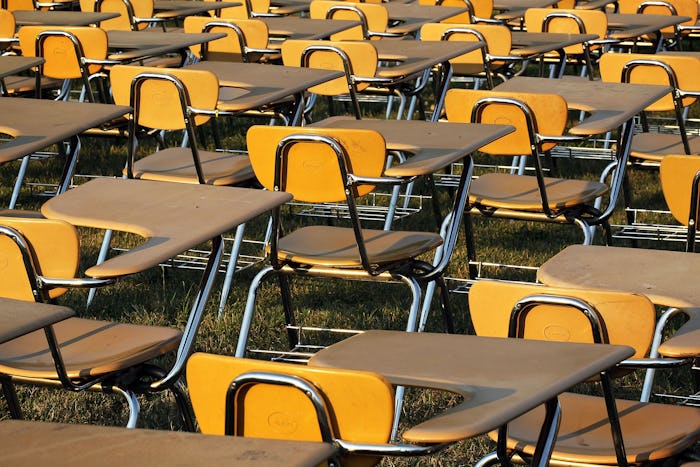Kids who miss too much school — especially in the early years — are falling behind their classmates academically. It's a serious, pressing education problem that seven states plus Washington, D.C., have devised plans to address, and one midwestern state is next in line in tackling this widespread barrier to academic success. So, Minnesota's new plan to keep kids in school reflects the nation's "chronic absenteeism" problem as it seeks to remedy it. In order to do that, the state expects to begin tracking how many students miss 10 percent or more days of school per year, regardless of the reason and whether or not the absence is excused, as an effort to improve graduation rates and overall student achievement.
According to the Minneapolis Star-Tribune, the step is part of an in-the-works school improvement plan in a state that currently has no clear mandate when it comes to addressing chronic absenteeism. But officials hope that after it's presented to the federal government for approval in September, the plan will help to turn around some troubling statistics: For example, about 10 percent of students there missed 10 percent of school last year, which totals out to about two days per month, or one month cumulatively.
And cutting down on chronic absenteeism — which is different from truancy because it focuses on absences that are both excused and unexcused and the academic impact — is crucial in ensuring that students reach their potential in the classroom. Research has established that kids who are chronically absent in Kindergarten don't perform as well as their peers in first grade, according to an Education Week research brief. The consequences are especially dire for kids living in poverty because they "are less likely to have the resources to make up for lost time in the classroom," the brief reads.
A 2016 report from the U.S. Department of Education called chronic absenteeism "widespread and prevalent," with 15 percent of all students (more than 6 million) missing more than 10 percent of school days during the 2013-2014 school year. The department considered the problem so important that it developed an interactive website dedicated to it. Additionally, the phenomenon affects student outcomes so much that more than half of states are considering using it as a school quality indicator.
Minnesota's Duluth News Tribune reported that factors that contribute to chronic absenteeism include students' leading troubled lives and/or living in poverty, avoiding class because of reading deficiencies, bullying or a disability repelling them from school, and more. One of the most striking reasons? Parents allowing their kids to skip school for vacations or "mental health" days, mistakenly believing that missing some classroom time here and there won't make much of a difference.
Right now in Minnesota, individual schools and districts are addressing attendance issues. For example, one middle school pairs kids who don't attend school enough with mentors, according to the Star-Tribune.
If all goes according to plan, in Minnesota and elsewhere, more kids will soon begin going to school more and more, leading to kids recognizing the academic achievement of which they are already capable.
